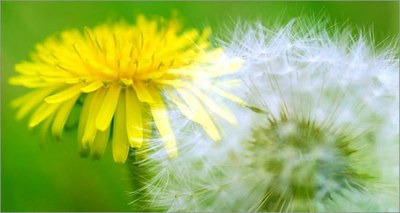Innovation: Italian study opens up new perspectives for natural rubber production
7/2/2019
 An ENEA study, published in the international journal BMC Genomics, opens new perspectives for the production of natural rubber in Europe. Natural rubber, a raw material of particular technological and commercial importance, cannot be replaced with artificial rubber in many applications. In recent years, interest has grown for the identification and the study of new plant species capable of producing this material. Researchers from the Genomics team of the ENEA Trisaia Research Center have found interesting potentials in the Russian dandelion (Taraxacum kok-saghyz) as an alternative to the rubber tree (Hevea brasiliensis), which cannot be grown at our latitudes and is greatly at risk due to phytopathological problems.
An ENEA study, published in the international journal BMC Genomics, opens new perspectives for the production of natural rubber in Europe. Natural rubber, a raw material of particular technological and commercial importance, cannot be replaced with artificial rubber in many applications. In recent years, interest has grown for the identification and the study of new plant species capable of producing this material. Researchers from the Genomics team of the ENEA Trisaia Research Center have found interesting potentials in the Russian dandelion (Taraxacum kok-saghyz) as an alternative to the rubber tree (Hevea brasiliensis), which cannot be grown at our latitudes and is greatly at risk due to phytopathological problems.
"Due to its physiological characteristics and the very high quality of the rubber produced at the root system level, the Russian dandelion is one of the most valid and promising plant species for rubber production. Our study has allowed to identify several genes involved, directly and indirectly, in the production and accumulation of gum in the roots of this plant ", ENEA researcher Paolo Facella, one of the authors of the study, explained. "Furthermore, the comparison between high and low-yielding Russian dandelion specimens showed that the amount synthesized is strongly influenced by the synthesis of other metabolites in the root (like some terpenes and phenylpropanoids), which appear to be in competition with it ; by intervening genetically on the production of these metabolites, it will therefore be possible to improve the yield of natural rubber,"Facella said.
This information can be used to obtain Russian dandelion plants with an increased large-scale production of natural rubber, to be used for example in tire manufacturing. Also some giants of the sector are moving in this direction, like Continental, which has announced an innovative project for the production of Russian dandelion with roots the size of a beet, from 2020 in Germany. The Fraunhofer Institute is involved at the scientific level, while Bavarian and Saxon farmers will conduct experimental field trials .[1]
The study and characterization of plants of interest for biotechnologies and green chemistry, like those of the Asteraceae family to which the dandelion belongs, open the way to the application of innovative strategies for the valorisation of crops in our territory. Particularly in Basilicata, where the ENEA Trisaia Research Center is a link between companies and research, a territory particularly rich in agricultural biodiversity and an extraordinary source of plant species of considerable interest for the production of high added-value compounds.
For more information please contact:
Paolo Facella, ENEA- Bioenergy, Biorefinery and Green Chemistry Division, paolo.facella@enea.it
The authors of the study Comparative transcriptomics between high and low rubber producing Taraxacum kok-saghyz R. plants are: Francesco Panara, Loredana Lopez, Loretta Daddiego, Elio Fantini, Paolo Facella and Gaetano Perrotta.
[1] https://www.continental-pneumatici.it/industria-agro/il-gruppo/sostenibilita/taraxagum/signora-tarassaco
